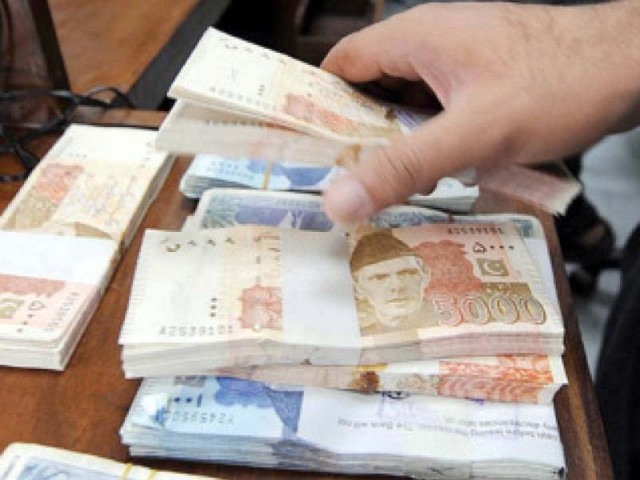Rupee spread widens to record
Currency selling with difference of Rs10-12 per dollar in open, inter-bank markets

The spread between the value of Pakistani currency in open and inter-bank markets has widened to a record high at Rs10-12 per dollar, as currency dealers are selling one US dollar for Rs238-240 in open market compared to Rs228.18 in inter-bank market.
The rupee becomes cheaper to over Rs242 to a dollar if people opt to make payments in foreign currency through credit cards. Earlier, the situation was entirely different for the past one and a half year. The rupee was expensive by Rs2-4 in the open market compared to the inter-bank market.
Historically, the open market has sold the dollar at a price higher by Rs1-2 compared to inter-bank dealings.
The local currency became significantly cheaper in open market after the State Bank of Pakistan (SBP) allowed currency dealers in mid-August 2022 to export surplus US dollars to Dubai and Qatar, import an equal amount of dollars for their bank accounts in Pakistan within three days from the date of export and surrender the 100% exported-and-imported dollars in inter-bank market.
The central bank gave permission to export the surplus dollars till September 30, 2022, after currency dealers ensured that there were enough dollar supplies to meet individual buyers’ demand in the country.
The central bank, however, linked the export of foreign currency to its approval with effect from September 7 (Wednesday).
Currency dealers are still allowed export of surplus foreign currencies other than US dollars and bringing an equivalent amount in US dollar.
Exchange Companies Association of Pakistan (ECAP) General Secretary Zafar Paracha said the rupee spread had widened in the wake of a significant reduction in supply of foreign currencies to their counters.
A large part of supplies is going to the black market as illegal currency dealers – called Hundi/ Hawala operators – and smuggler of goods have become “active again across the border with Afghanistan and Iran”.
“The supply of foreign currency to our counters has reduced to one-fourth these days, as illegal operators are paying a higher price for foreign currencies,” Paracha said.
“Hawala/ Hundi operators are paying Rs240 for each US dollar in Karachi, Rs245 in Peshawar and Rs248 in Afghanistan,” he revealed.
Accordingly, the US dollar supplies have dropped to $10-15 million per day to the counters in open market compared to around $50 million per day in the recent past, he said.
Paracha claimed that Hawala/ Hundi operators had also reorganised in foreign countries and that was why the flow of worker remittances through official channels including banks and exchange companies slowed down to around $2.5 billion in July 2022.
“India is buying US dollars in Afghanistan to destabilise Pakistan and Afghanistan economically,” he said.
Afghanistan’s traders of goods were making heavy imports through Pakistan to meet their local demand. They were buying US dollars from Pakistani markets to make import payments. “They cannot do all this without involvement of Pakistani officials,” he alleged.
The central bank is taking administrative actions through changing rules and regulations for foreign exchange markets. “However, the smuggling of foreign currencies and goods cannot be controlled unless the law enforcement agencies come into full action,” he said.
Meanwhile, Pakistan is importing onion and tomatoes from Iran these days to overcome the shortfall of vegetables that has emerged in the wake of floods. However, Pakistan has no official banking channels with Iran due to international sanctions on Tehran.
Therefore, “Pakistani traders are arranging payments from the open and black markets to make import payments to Iran”.
Published in The Express Tribune, September 11th, 2022.
Like Business on Facebook, follow @TribuneBiz on Twitter to stay informed and join in the conversation.



















COMMENTS
Comments are moderated and generally will be posted if they are on-topic and not abusive.
For more information, please see our Comments FAQ